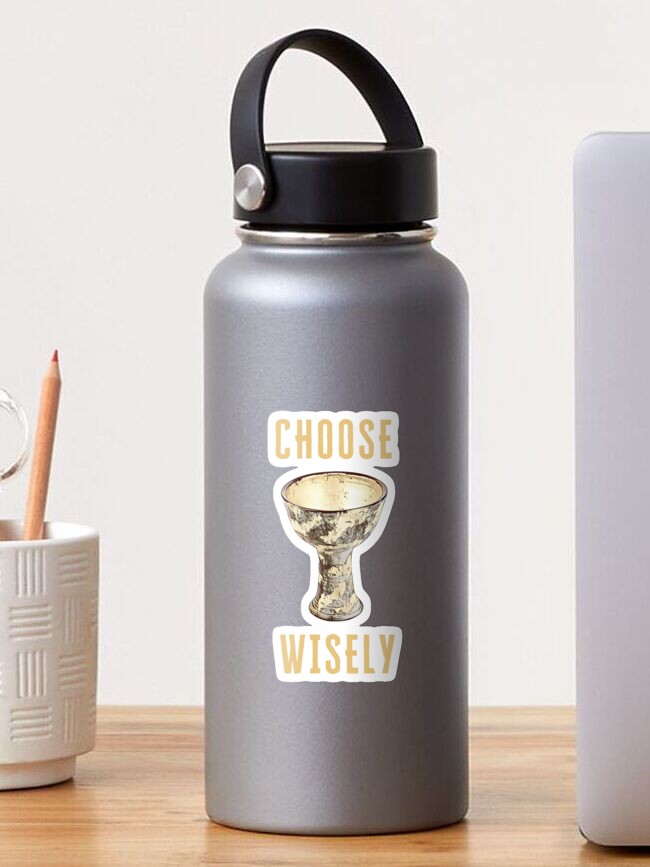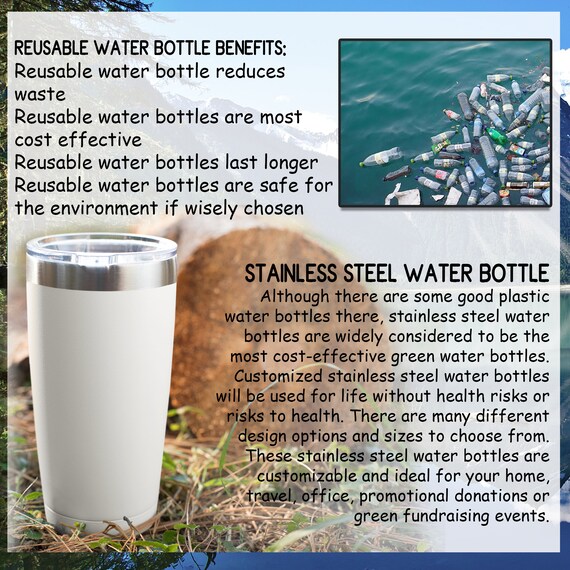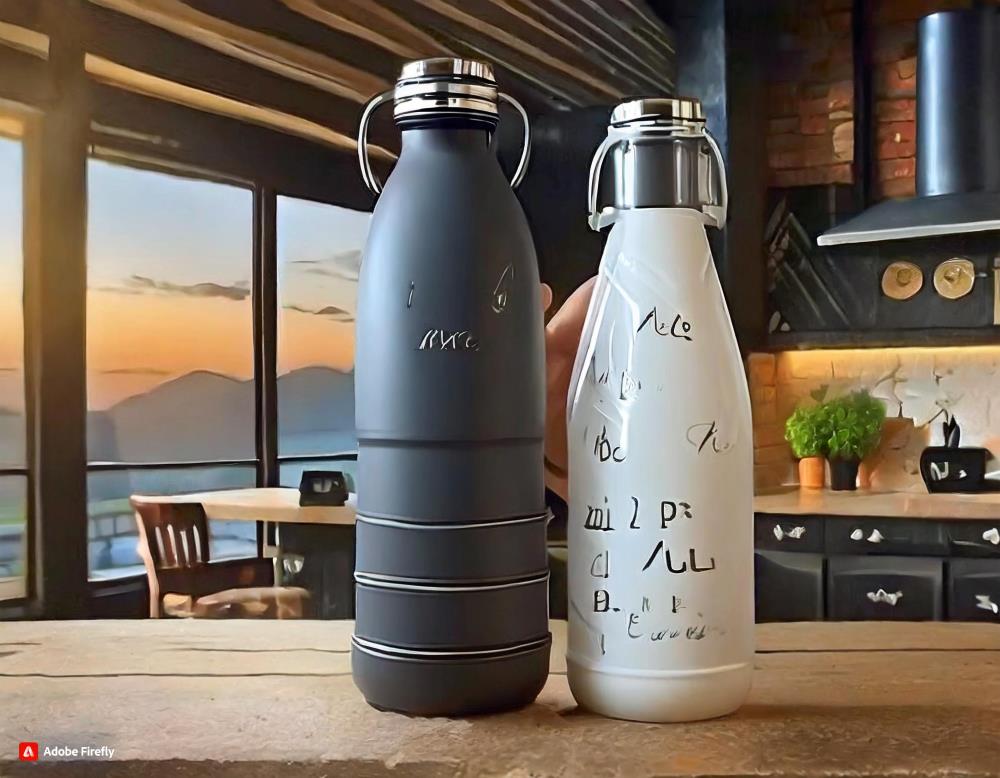Stainless steel water bottles offer durability and eco-friendliness, while plastic bottles are lightweight and cost-effective. Deciding which to use between stainless steel vs plastic depends on personal preferences and environmental considerations.
Choosing between a stainless steel and a plastic water bottle is pivotal for both your health and the environment. Stainless steel bottles are robust, safe, and highly resistant to bacteria buildup, making them a wise choice for those concerned with longevity and cleanliness.
They are easy to clean, often insulated, and BPA-free, ensuring your drinks remain pure and at the right temperature. Plastic bottles, on the other hand, are lightweight and initially less expensive, appealing for everyday use and convenience. Yet, they can release harmful chemicals if reused extensively and are a significant source of pollution due to their lower recycling rates and long decomposition period. As consumers become more environmentally conscious, the trend shifts towards sustainable choices that benefit both our health and the planet, making stainless steel an increasingly popular option.

Credit: www.amazon.com
Materials In The Spotlight: Stainless Steel Vs Plastic
Choosing the right water bottle involves understanding materials. Two popular choices are stainless steel and plastic. Let’s compare them.
Composition And Durability
Stainless steel water bottles are made from iron alloys with chromium and nickel. This makes them rust-resistant and long-lasting. They can survive drops and high temperatures.
In contrast, plastic bottles are made from polymers like polyethylene. They are lightweight but not as durable. They can crack or scratch easily.
| Material | Durability |
|---|---|
| Stainless Steel | High |
| Plastic | Lower |
Health And Safety Concerns
Stainless steel is often safer for water storage. It doesn’t release chemicals over time.
- Free of BPA and toxins
- Doesn’t harbor bacteria
Plastic bottles, on the other hand, can leach chemicals like BPA. This can happen especially with heat.
- Avoid reusing single-use bottles
- Choose BPA-free options when possible

Credit: www.redbubble.com
Life Cycle Analysis
Choosing between a stainless steel and a plastic water bottle means considering their entire life cycle. Life Cycle Analysis (LCA) measures the environmental impacts from production to disposal. Let’s dive into the production processes and environmental footprint of each option.
Production Processes
Stainless steel bottles are made from natural elements like iron ore, chromium and nickel. These materials are mined, refined, and then formed into bottles. Energy use is high, but stainless steel is also 100% recyclable. This means it can become new products without losing quality.
In contrast, plastic bottles come from non-renewable petroleum. Manufacturers turn it into polymers, then into bottles. The process is less energy-intensive than stainless steel. Yet, recycling plastic can be complex. Different types of plastics often get mixed, making them less recyclable.
Environmental Footprint
The environmental footprint of a water bottle includes energy use, resource depletion and pollution. Stainless steel bottles have a larger initial impact. Once made, they last for many years. This durability means less frequent replacements and a smaller footprint over time.
Plastic bottles have a smaller initial impact. But they can break easily and degrade over time. This leads to more bottles in landfills. Production also releases harmful chemicals into the air and water.
In a nutshell, stainless steel bottles have a high upfront cost to the planet. With time, their longer life reduces waste. Plastic bottles may seem less harmful at first. But they can damage the environment more due to low recyclability and short lifespan.
Hydration Habits And User Experience
Choosing the right water bottle affects daily hydration.
Material choice influences taste, weight, and convenience.
User experience varies greatly.
Taste And Odor Considerations
Stainless steel preserves water’s natural flavor.
It does not impart any odors. Plastic may alter taste over time.
Bottles can collect residues that affect the water taste.
Cleaning stainless steel is easy and prevents flavor carry-over.
Plastic bottles sometimes retain smells and aromas.
Weight And Portability
Both bottle types offer unique perks for users on the move.
| Material | Weight | Portable |
|---|---|---|
| Stainless Steel | Heavier | Durable for travel |
| Plastic | Lighter | Convenient for light packs |
Stainless steel bottles are heavier, making them sturdy companions.
Lightweight plastic is ideal for quick trips or children’s use.
Clip-on features enhance portability for both materials.

Credit: www.etsy.com
Cost And Longevity
Choosing between stainless steel vs plastic water bottles involves weighing costs and how long they last. Two key points stand out: initial cost and maintenance. Both factors play a huge role in deciding the better choice for you.
Initial Investment
Stainless steel water bottles often come with a higher price tag upfront. Plastic bottles are much cheaper. This may attract people on a tight budget. But, the initial cost doesn’t tell the whole story.
Lifespan And Maintenance
The true value of a water bottle shines over time.
- Stainless steel wins in durability.
- These bottles can survive drops and avoid cracking.
- Cleaning them is often simple, requiring only soapy water.
Comparatively, plastic bottles may not withstand impact and can develop cracks or leaks. They may also retain odors or stains, demanding frequent replacement.
Let’s break down the longevity factor:
| Material | Expected Lifespan | Maintenance Level |
|---|---|---|
| Stainless Steel | Many years with proper care | Low: Resistant to stains & odors |
| Plastic | Lower: Prone to damage | High: Can absorb stains & odors |
So, while stainless steel bottles may cost more at the start, they often last much longer. This means less frequent replacements and better value in the long run.
In contrast, plastic bottles, less expensive initially, might need replacing more often. Over time, this can add up.
Recyclability And End-of-life Disposal
he choice between stainless steel and plastic water bottles involves more than personal preference. Understanding recyclability and end-of-life disposal can guide eco-conscious decisions. This critical aspect determines a product’s impact on the environment long after it serves its purpose.
Recycling Infrastructure
Recycling systems vary in efficiency and capability. This affects how well materials return to the production cycle.
- Stainless steel bottles are 100% recyclable. Many recycling centers are equipped to process these metal goods effectively.
- Plastic bottles often have lower recycling rates. They can degrade in quality when recycled, leading to ‘downcycling’ rather than a true closed-loop system.
Impact On Landfills And Oceans
End-of-life disposal of bottles can lead to environmental damage. The impact depends on how the materials degrade.
| Material | Landfill Impact | Ocean Impact |
|---|---|---|
| Stainless Steel | Takes up space but does not degrade to microplastics | Seldom ends in oceans due to higher value and recyclability |
| Plastic | Decomposes slowly, possibly releasing harmful chemicals | Commonly found in oceans, harming marine life and ecosystems |
Stainless Steel Vs Plastic: Making The Sustainable Choice
Choosing between stainless steel and plastic water bottles can puzzle anyone. Your decision impacts the environment and your health. Let’s explore these options and make a wise, green choice.
Consumer Awareness And Education
Kicking off with Consumer Awareness and Education, we need to understand the effects of our choices. Stainless steel bottles, unlike plastic, do not leach chemicals into your drink. They also have a longer life span. Plastic bottles often contain BPA, which can harm our bodies. Most importantly, stainless steel is 100% recyclable. Plastic, however, can take hundreds of years to decompose.
Educating consumers about these factors leads to informed decisions. By choosing stainless steel, consumers reduce waste and avoid chemicals. Here’s a quick rundown:
- Stainless Steel Bottles: Long-lasting, chemical-free, fully recyclable.
- Plastic Bottles: Short-term use, potential health risks, environmental burden.
Navigating Market Options
As we Navigate Market Options, it’s clear: the market offers myriad choices. Yet, not all stainless steel water bottles are created equal. Opt for bottles that are food-grade and come from reputable brands.
Look for these qualities in stainless steel bottles:
| Material Quality | Sustainability | Usability |
|---|---|---|
| Food-grade | Recyclable | Leak-proof |
| Corrosion-resistant | Low carbon footprint | Easy to clean |
Remember, cheaper plastic options will cost more in the long run. They affect both the environment and your wallet. Invest smartly—choose stainless steel for a sustainable lifestyle.
Frequently Asked Questions For Stainless Steel Vs Plastic, Which Water Bottle Should You Use?
Is Stainless Steel Water Bottle Better Than Plastic?
Stainless steel bottles are generally more durable and long-lasting than plastic ones. They don’t leach chemicals when exposed to heat and are often recyclable, making them a safer and eco-friendlier option.
Can Plastic Water Bottles Cause Health Issues?
Certain plastic bottles contain BPA and other chemicals that can leach into water, especially when heated. These substances may pose health risks like hormonal disruptions. Stainless steel doesn’t have this issue.
How Does Taste Differ Between Plastic And Stainless Bottles?
Water in stainless steel bottles typically maintains a cleaner taste, as plastic can sometimes impart a slight flavor, particularly if the bottle is old or if the water has been stored for a long time.
What’s The Environmental Impact Of Stainless Vs Plastic Bottles?
Stainless steel bottles have a much lower environmental impact over their lifetime than plastic. They are easily recyclable and don’t contribute to the single-use plastic burden on our planet.
Conclusion
Deciding between stainless steel vs plastic water bottles ultimately hinges on your preferences and lifestyle needs. Stainless steel offers durability and insulation benefits, while plastic is lightweight and cost-effective. Choose eco-friendly and health-conscious options to stay hydrated and protect our planet.
Make an informed choice and drink up responsibly!








